Food Shortages Loom Again in Somalia, But Refugees Can’t Escape Water Crisis
Poor rains have led to crop failures in Somalia, and the threat of food price increases could push parts of the country back into famine. Meanwhile, there is little relief for those who fled to neighboring Kenya, as the refugee camps there are facing water shortages.
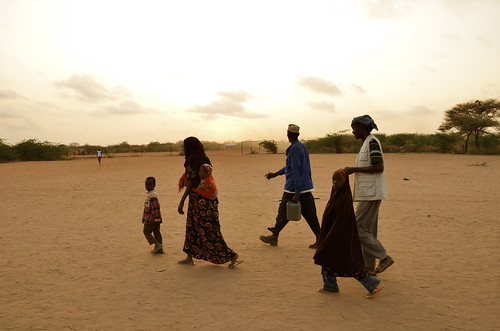
One year after parts of Somalia were declared famine zones, 1.3 million people are again at risk of falling back into a food crisis, the international food aid agency Oxfam has said. The number of refugees from Somalia now totals more than 1 million as citizens have fled the country due to conflict, drought, and food shortages over the past two decades.
Adequate rains throughout the fall 2011 Dayr rainy season offered a bountiful harvest that replenished food stocks in Somalia, and the United Nations declared an end to the famine in February 2012. However, this year’s summer Gu rains arrived late, and, in some places, were 80 percent less than in a normal year, according to Oxfam. In Somalia, Gu refers to the primary rainy season lasting from April through June, while Dayr refers to the second rainy season lasting from October through December.
“For families who had yet to recover from the ravages of last year and who, even in good years, are living so close to crisis, this could prove catastrophic — for many people in Somalia there is little or no resilience to deal with shocks like failed rains or conflict,” the agency said in a press release.
An acute shortage of aid funding in a time of global budget cuts, coupled with a severe drought in the United States that is already pushing up grain prices, could compound the problems in the Horn of Africa.
A Poor Harvest Expected
Harvest from the Gu rainy season is expected in August, but the Food Security and Nutrition Analysis Unit (FSNAU) predicts that the harvest will be “below average” or “poor” in the agro-pastoral south, causing food security to deteriorate. This region produces almost two-thirds of the country’s sorghum, and it relies on the Gu rains to produce four to six months of cereal supplies.
“These areas are slowly recovering from Famine (IPC Phase 5) last year, and levels of acute malnutrition remain very critical,” states a report from USAID’s Famine Early Warning Systems Network (FEWSNET). “Although modest seasonal improvements in food security are expected with August harvests, Crisis and Emergency level food insecurity are expected to persist.”
FEWSNET’s Integrated Food Security Phase (IPC) classification system says that households with “Crisis”-level food insecurity have significant food consumption gaps and high malnutrition, and that they are likely to sell essential assets to meet minimum food needs. Households with “Emergency”-level food insecurity are said to have extreme food consumption gaps and very high acute malnutrition, and they may suffer extreme losses of livelihood assets.
Uncertain Future For Food Prices
Food prices have been stable or even decreasing in many areas of Somalia, according to the latest Food Price Watch Annex report released by FEWSNET, which analyzed prices for May 2012. Market prices for red sorghum in the capital of Mogadishu were down 67 percent from a year earlier, while cowpea prices were down 43 percent, and white maize prices dropped 39 percent.
However, there remain localized areas where food prices have been climbing. For example, prices for red rice have jumped 21 percent over the last year in Hargeisa, the second-largest city in Somalia and the capital of Somaliland, a self-declared republic that is internationally recognized as an autonomous region of Somalia. In Baidoa, the third largest Somali city, May prices for red sorghum were down 74 percent from 2011, but climbed 30 percent over April.
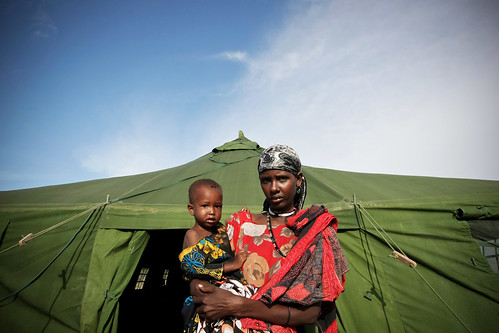
Meanwhile, food prices have been skyrocketing in neighboring Kenya. Nairobi saw white maize prices rise 33 percent between April and May to levels that were 15 percent higher than in 2011 and 87 percent higher than in 2010. Potato prices rose 5 percent between April and May, making them 43 percent higher than in 2011 and 122 percent higher than in 2010. In Kisumu, a town on the northeastern shore of Lake Victoria, white maize prices in May 2012 were 24 percent higher than in 2011 and 183 percent higher than in 2010.
“In East Africa, staple food prices increased steadily through May as supply from previous harvests diminished,” stated the FEWSNET Price Watch report. “In deficit areas such as northeastern Kenya, prices started to rise from already high levels. In Somalia, tightening markets, trade disruptions due to conflict, and below normal Gu production are expected to put upward pressure on prices.”
Across the ocean, withering corn crops in the United States — the world’s top corn exporter — are another factor that could drive prices up for East Africa and which could have a big impact on world markets. Record corn production was forecast after U.S. farmers planted the largest number of corn acres since 1937, which would have added much needed supply to global grain reserves. But, following the announcement that the United States is suffering its most expansive drought since 1956, the U.S. Department of Agriculture (USDA) recently lowered projections for global coarse grain supplies by 47.6 million metric tons for 2012-2013. The USDA also lowered projections for global corn ending stocks by 21.7 million metric tons. Deteriorating crop conditions have already pushed commodity prices for corn to record highs above $US 315.00 per metric ton ($US 8.00 per bushel).
“The full extent of [U.S.] crop damages and losses will be better understood in the coming weeks, but maize price increases observed in late June will likely continue,” stated the FEWSNET report, referring to prices in East Africa.
Refugee Camps Running Out of Funding and Water
In Somalia, where refugees continue to leave the country, and in Kenya, where many of them go, aid agencies are warning that they do not have enough funding to face the food crisis. The United Nations’ consolidated appeal for aid for Somalia is little over halfway met — $US 579 million dollars have been raised out of $US 1 billion needed, according to Oxfam.
“If we wait to respond to the multiple warnings that have been received, as happened last year, people will be forced to eat their seed stocks and breeding animals, meaning the chances of facing the same problems again this year are high,” the agency said in a press release.

Those who leave often cannot escape food and water shortages — parts of Kenya’s Dadaab camp, the largest refugee camp in the world, could be out of water by the end of August without further funding, Oxfam warned.
“The funding to maintain these crucial water systems is set to run out at the end of August, which would deprive 50,000 refugees in Ifo 2 East and Kambioos of their only water source,” the press release said.
The United Nations Refugee Agency (UNHCR) has called Somalia “one of the world’s longest and worst refugee crises.” The agency added that Somalia joins the ranks of Iraq and Afghanistan, where conflicts over the past decade have forced more than 1 million people from their homes in these countries as well.
Sources: FAO; FEWSNET; FSNAU; Oxfam; UNHCR; USDA
A news correspondent for Circle of Blue based out of Hawaii. She writes The Stream, Circle of Blue’s daily digest of international water news trends. Her interests include food security, ecology and the Great Lakes.
Contact Codi Kozacek

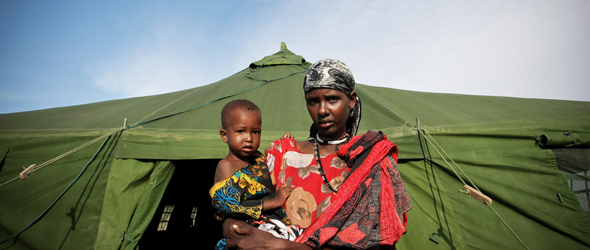

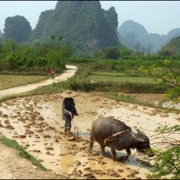



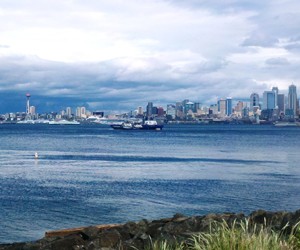
Leave a Reply
Want to join the discussion?Feel free to contribute!